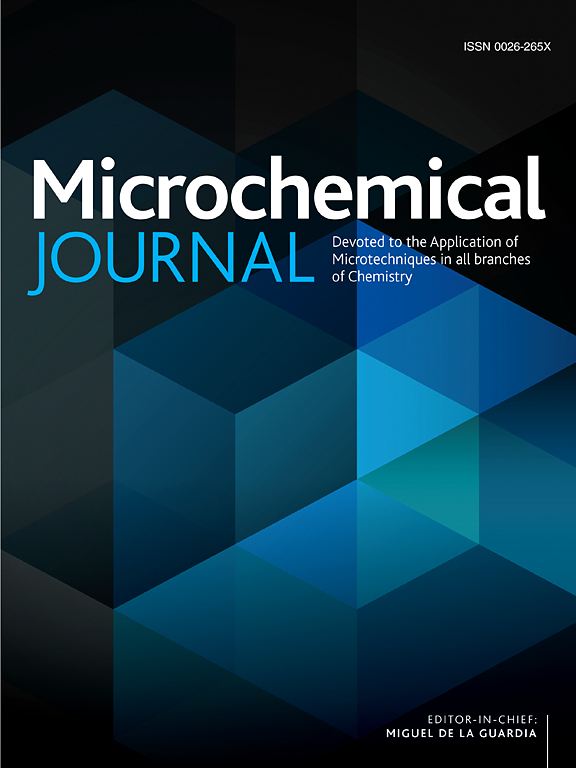Biomimetic nanozymes with tunable peroxidase activity based on peptides co-assembly for colorimetric sensing of uric acid
IF 4.9
2区 化学
Q1 CHEMISTRY, ANALYTICAL
引用次数: 0
Abstract
The construction of simple and efficient artificial enzymes is of great importance in the fields of sensing and catalysis. In this work, peptide nanotubes (CA-PNTs) co-assembled from two short peptides were non-covalently combined with hemin to obtain a series of CA-PNTs/hemin composites as biomimetic peroxidase materials. Due to the introduction of histidine and arginine in the short peptides simulating the microenvironment near the hydrophobic cavity in the activity center of the natural enzyme, CA-PNTs/hemin shows enhanced peroxidase activity compared with free hemin and the single short peptide self-assembled peptide nanotubes-supported hemin complex, and the enzyme activity of the material could be regulated by simply adjusting the proportion of co-assembled short peptides. Further investigation of the catalytic mechanism demonstrates that CA-PNTs/hemin can effectively bind to H2O2 to form active intermediates and catalyze the decomposition of H2O2 to generate superoxide radicals (O2•−), thus promoting the whole enzymatic reaction. Combined with an enzyme cascade reaction and enzyme catalytic chromogenic system, a colorimetric method based on CA-PNTs/hemin for uric acid (UA) sensing was constructed. The strategy shows a linear range of 0.5–80 μM with a low limit of detection (0.2 μM) and good selectivity, and has been successfully applied to the determination of UA in human urine. A portable platform for UA detection was further developed by conjugating the strategy with smartphones.

求助全文
约1分钟内获得全文
求助全文
来源期刊

Microchemical Journal
化学-分析化学
CiteScore
8.70
自引率
8.30%
发文量
1131
审稿时长
1.9 months
期刊介绍:
The Microchemical Journal is a peer reviewed journal devoted to all aspects and phases of analytical chemistry and chemical analysis. The Microchemical Journal publishes articles which are at the forefront of modern analytical chemistry and cover innovations in the techniques to the finest possible limits. This includes fundamental aspects, instrumentation, new developments, innovative and novel methods and applications including environmental and clinical field.
Traditional classical analytical methods such as spectrophotometry and titrimetry as well as established instrumentation methods such as flame and graphite furnace atomic absorption spectrometry, gas chromatography, and modified glassy or carbon electrode electrochemical methods will be considered, provided they show significant improvements and novelty compared to the established methods.
 求助内容:
求助内容: 应助结果提醒方式:
应助结果提醒方式:


